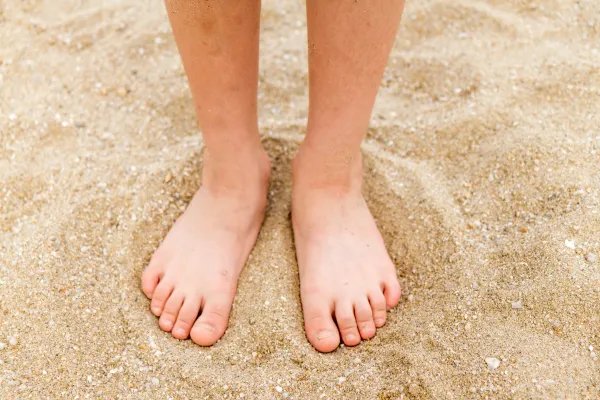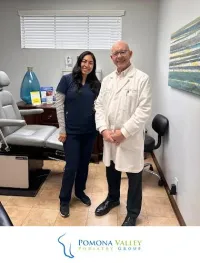
Ingrown Toenails in Children: What Parents Should Know
As parents, we know that kids can often ignore small aches and pains, which sometimes makes it hard to detect issues like ingrown toenails. While ingrown toenails are more common in adults, they can certainly affect children as well. If left untreated, they can cause pain, infection, and even more serious complications. That’s why it’s important for parents to know what signs to look for and how to properly treat ingrown toenails in kids.
What Causes Ingrown Toenails in Children?
An ingrown toenail occurs when the edge or corner of the toenail grows into the surrounding skin, causing discomfort and sometimes an infection. Here are the common causes of ingrown toenails in children:
Improper Toenail Cutting
Cutting toenails too short or rounding the edges can cause the nail to grow into the skin instead of straight out, leading to an ingrown toenail.Tight or Ill-Fitting Shoes
Shoes that are too tight, especially around the toe area, can press the toenail into the skin, causing irritation and increasing the risk of developing an ingrown toenail.Injury or Trauma
A stubbed toe or any other injury to the nail can lead to an ingrown toenail. Children who play sports or are active may be more prone to trauma that affects the toenail.Genetics
Some children may simply inherit a tendency to develop ingrown toenails due to the natural shape of their toenails or the way their feet develop.Poor Foot Hygiene
Not keeping the feet clean and dry can contribute to the development of ingrown toenails. Bacteria can build up around the toenail, causing infection when the nail presses into the skin.
Signs of Ingrown Toenails in Children
Children may not always express their discomfort, but there are several signs to look out for that may indicate an ingrown toenail:
Pain or Tenderness: If your child complains of pain, especially when wearing shoes or touching their toes, it may be a sign of an ingrown toenail.
Swelling or Redness: The area around the toenail may appear swollen, red, or inflamed.
Visible Nail Growing into the Skin: In more advanced cases, you may be able to see the toenail growing into the skin, which is often accompanied by pain and irritation.
Infection: If the ingrown toenail becomes infected, you may notice pus or drainage around the nail.
How to Treat Ingrown Toenails in Children
If your child has an ingrown toenail, it's important to act quickly to avoid complications. Here are some steps you can take at home and when to seek professional help:
Soak the Foot
Soaking the foot in warm, soapy water for 15-20 minutes a few times a day can help soften the skin and nail, reducing pain and inflammation. It also helps prevent infection by keeping the area clean.Apply an Antiseptic
After soaking, gently dry the foot and apply an antiseptic to the affected area to prevent infection. Be careful not to apply too much pressure on the ingrown nail.Use Cotton or Dental Floss
If the nail is not too deeply embedded in the skin, you can try gently placing a small piece of cotton or dental floss between the nail and the skin to encourage the nail to grow in the correct direction. Be sure to do this carefully and gently.Proper Footwear
Make sure your child wears shoes that have enough room in the toe box and do not pinch the toes. Avoid tight, restrictive shoes that may exacerbate the issue.Cut Toenails Properly
Trim your child's toenails straight across, without cutting them too short or rounding the edges. This simple step can prevent future ingrown toenails.Pain Relief
If your child is in pain, you can administer over-the-counter pain relief medications like ibuprofen, following the appropriate dosage instructions for their age and weight.
When to See a Podiatrist
If the ingrown toenail doesn’t improve with home treatment or if your child shows signs of infection (such as increased redness, swelling, or pus), it’s time to see a podiatrist. A podiatrist can professionally treat the ingrown toenail, potentially by lifting or removing part of the nail to prevent further issues. In severe cases, they may recommend a small procedure to permanently remove the nail’s edge.
Conclusion
While ingrown toenails in children can be painful, they’re usually easy to treat with the right approach. By practicing good foot hygiene, wearing the right shoes, and knowing how to handle ingrown toenails early on, you can help your child find relief and avoid further complications.
If you notice any signs of an ingrown toenail or have concerns about your child’s foot health, don’t hesitate to reach out to us at Pomona Valley Podiatry Clinic. We’re here to help!
Ask And His Team
Fill in the form to request a Call From Our Team
One of our team will call you for FREE and answer any questions or concerns you may have about your uncomfortable foot condition





